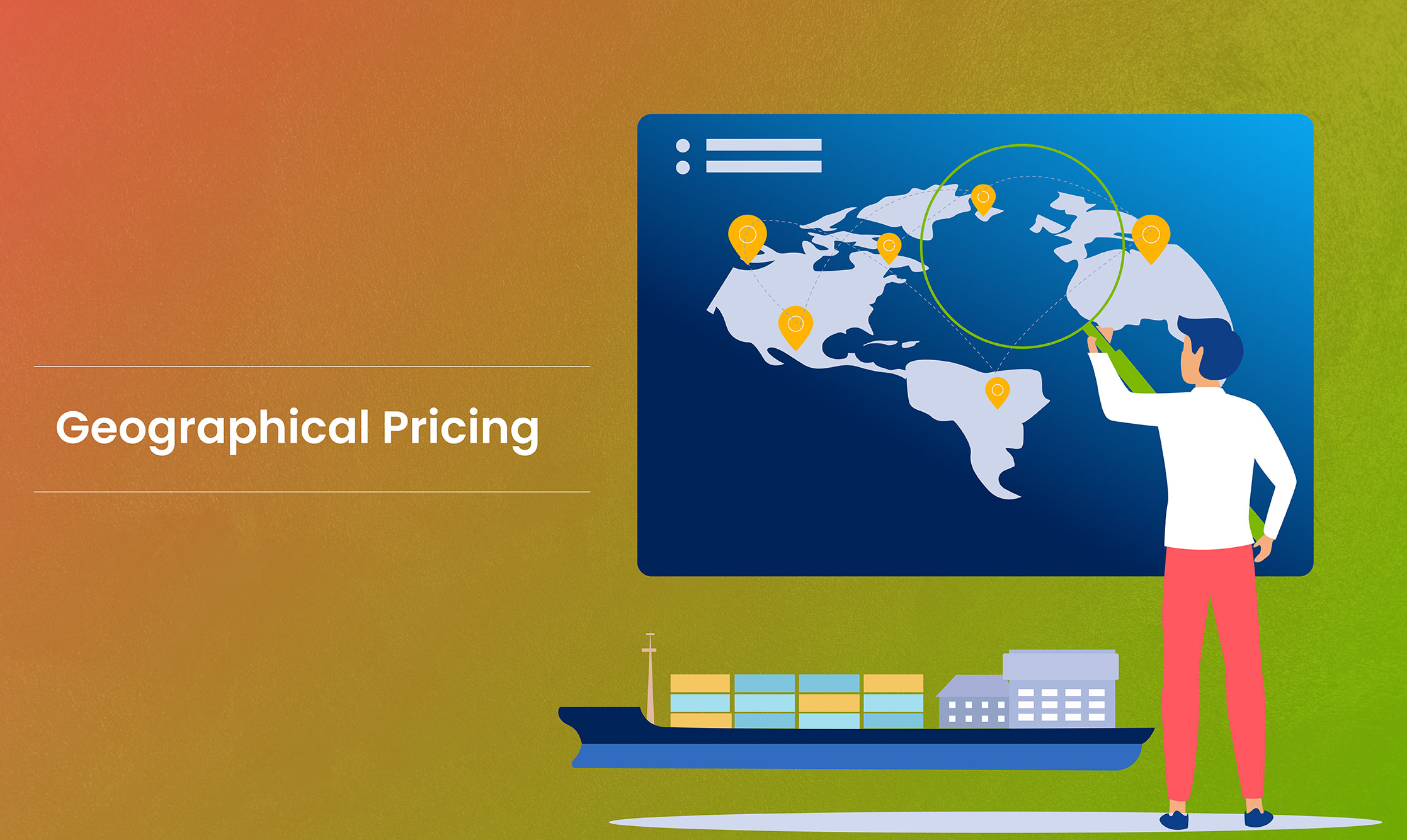Businesses utilize geographical pricing to modify the prices of their products or services based on the location of the customer. When companies employ geographical pricing, customers in separate geographic regions could be levied separate prices based on factors like demand and supply, competition, transportation expenses, and consumer buying power. In these instances, geographical pricing helps companies boost the specified profit margin and increase revenue while also improving sales in low-cost markets.
What Is Geographical Pricing?
Geographical pricing is the strategy of fixing distinct prices for goods or services depending on the customer’s geographic location. This pricing strategy considers factors like transportation costs, competition, market demand, and regional economic conditions. The objective is to augment market share and profitability in each unique geographic market.
Geographical pricing is key for businesses to remain competitive in the present global economy. For example, a company may levy a higher price for a good in a place that has a higher cost of production or high demand. Conversely, the price charged may be lower for a region with a lower cost of production or low demand. Geographical pricing is extensively used in different industries, like software and hardware, pharmaceuticals, retail, and automotive.
Importance of Geographical Pricing in Pricing Decisions
Through Geographical pricing, businesses consider local currency and demand, making the purchasing process easier and more appealing for customers in every locality. Customers have greater potential to buy products in their local currency, so Geographical pricing can offer businesses a substantial competitive advantage. Further, it can provide valuable information about local demand and local customer behavior, leading to more accurate pricing decisions for each location.
Overall, this strategy can help businesses become more flexible, as it will enable them to alter their prices depending on the changing market conditions of every locality. This pricing strategy gives you a better grasp of the consumer psychology associated with a specific geographical area.
Common Challenges
There are 3 major challenges regarding geographical pricing and ways to overcome them.
Handling Customer Perceptions
Customers can have strong views about pricing differences, which can cause dissatisfaction and harm the brand’s reputation if they aren’t managed properly.
Solution: Distinctly communicate separate prices in various regions to foster trust and educate customers concerning the factors affecting pricing, like geographical costs, market conditions, and taxes. Instruct customer service crews to attend to pricing-associated concerns and inquiries with compassion and professionalism.
Regulatory Challenges
Separate countries and markets have specific regulations and legal needs that will affect geographical pricing principles. It can be tough to negotiate local laws and achieve complete compliance with these guidelines.
Solution: To deal with regulatory challenges, obtain legal advice to assure compliance with local pricing laws. Be open to customers regarding the causes behind local prices, like different shipping costs, to prevent likely legal complications or disputes.
Addressing Challenges of Distribution and Logistics
Profitable pricing strategies rest on the effective logistics and distribution of goods or services to separate regions. Differing transportation expenses and lead times can confuse the adoption of geographical pricing.
Solution: Optimize distribution and supply chains to lower costs, decrease lead times, and improve efficiency. Consider local warehousing solutions to lower transportation costs and consolidate order fulfillment. Enforce dynamic inventory control and harness technology to track and modify logistics procedures in real time.
Pros and Cons of Geographical Pricing
Some of the pros and cons of geographical pricing are:
Pros
- Lower operational costs
- Enter into new markets
- Promote customer trust
- Optimize profits in different regions
Cons
- Makes bookkeeping and accounting complicated
- Deal with local regulations
- Customer impression of unfairness
- Difficulties in keeping brand consistency
- Formation of gray markets
Practical Tips
- Exhaustive Market Research
Before implementing any pricing scheme, detailed market research is needed. Study each region’s economic conditions, buying power, consumer behavior, and competition. Know the complexities of local marketplaces so that your pricing corresponds to what customers anticipate and are ready to spend.
- Study Operational Costs
Study the different costs of conducting business in various countries. This includes distribution and shipping costs, tariffs, and municipal taxes, along with operational costs like salaries and rent.
Understanding this can help you fix prices that maintain your profit margins unimpaired.
- Utilize Technology
Sophisticated analytics solutions can aid you in gathering and evaluating data on client preferences, local sales performance, and price sensitivity.
Utilize eCommerce platforms that help you quickly set separate prices for customers in separate locales. You can even apply automation to modify prices based on real-time information, removing manual labor and permitting more responsive pricing models.
- Maintain Transparency
Consumers are presently more knowledgeable than ever previously. If consumers find that they are levied more based only on their location, without any clarification, it could lead to negative feedback and an absence of confidence in your business.
To prevent this, remain transparent about why and how you utilize geographical pricing within your business. This can contribute immensely to retaining customer loyalty.
Conclusion
Geographical pricing is a potent pricing strategy that can help businesses grow profits, sales, and market share. By knowing your target market’s preferences and needs, assessing your competition, and keeping in mind your costs, you can evolve an effective Geographical Pricing strategy. Though this strategy has its benefits and drawbacks, it can be a successful tool for businesses seeking to foray into new markets or raise their profitability in existing ones.
If you are thinking about adopting a geographical pricing model, it is essential to perform substantial market research, evaluate your rivals’ pricing strategies, ascertain your costs, fix prices, and track and change your strategy as required.
Including AI-powered solutions like Rubick.ai within your geographical pricing strategy can boost the success of your pricing strategy. You can utilize Rubick.ai’s targeted advertising strategy, consisting of geotargeting and hyperlocal marketing, to access customers within a definite geographic region. The pricing intelligence tools offered by Rubick.ai ease your pricing strategy, enhance sales, and raise profits.
